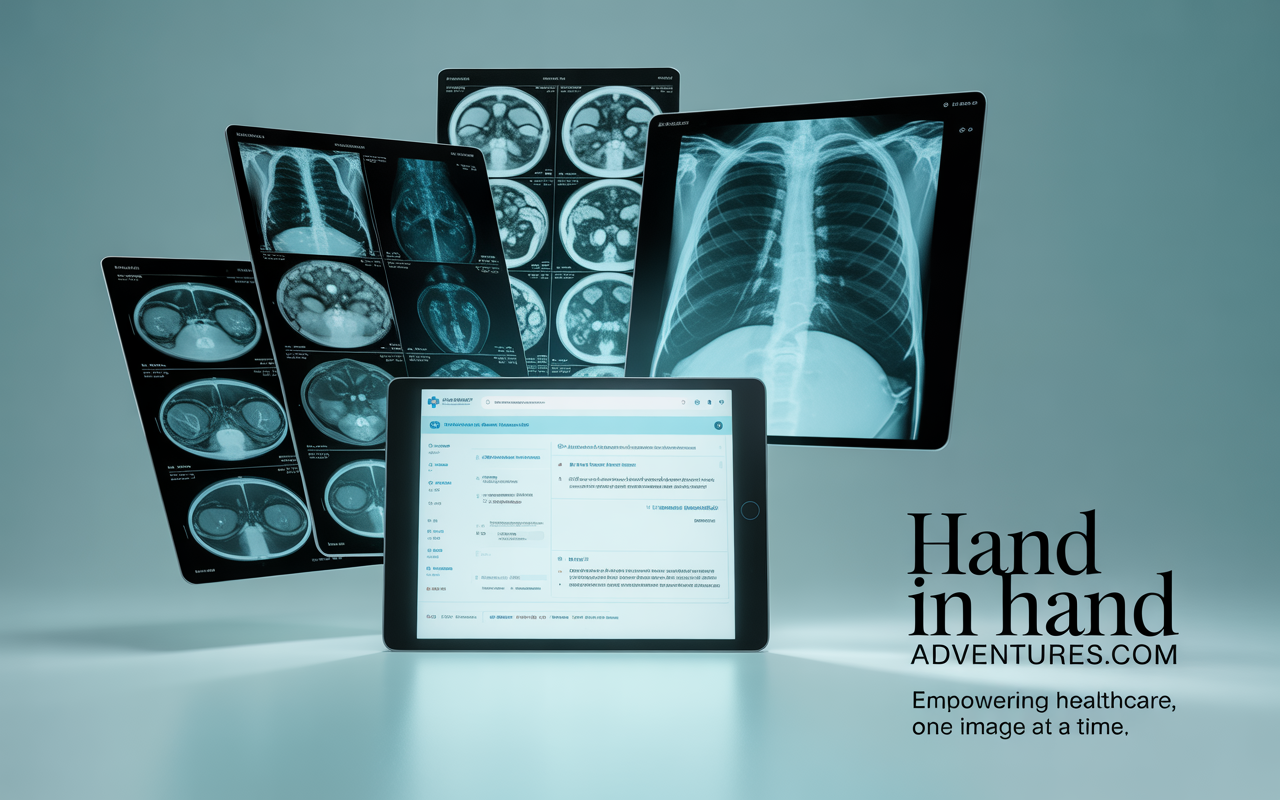In today’s fast-paced medical landscape, the reliance on diag images has transformed the way healthcare professionals diagnose and treat patients. Gone are the days when doctors solely relied on physical examinations and patient histories to determine ailments. With advancements in diagnostic imaging technology, physicians can now visualize internal structures with incredible clarity and precision. These visual tools not only enhance understanding but also lead to quicker diagnoses, ensuring that patients receive timely care.
As we dive deeper into the world of diag images, you’ll discover their evolution, benefits, challenges, and what the future holds for this vital aspect of modern medicine. Join us as we explore why these images have become indispensable in diagnostics today!
What are Diagnostic Images?
Diagnostic images are visual representations of the inside of the human body. They provide critical insights that help healthcare professionals identify medical conditions.
These images come from a variety of technologies, including X-rays, MRIs, CT scans, and ultrasounds. Each method produces distinct visuals that highlight different anatomical features or functions.
For instance, X-rays excel at revealing bone fractures while MRIs offer detailed views of soft tissues like muscles and ligaments. Ultrasounds use sound waves to visualize organs in real time, making them invaluable during pregnancy.
By translating complex internal structures into understandable images, diagnostic imaging bridges the gap between symptoms and accurate diagnoses. This vital tool enhances communication between patients and doctors by providing clear visual references for discussions about health issues.
Evolution of Diagnostic Imaging Technology
The journey of diagnostic imaging technology is fascinating. It began with simple X-rays over a century ago, revealing hidden fractures and diseases within the human body.
As time progressed, advancements like CT scans and MRIs emerged, offering more detailed images with unparalleled clarity. These technologies transformed how physicians approach patient care.
Digital imaging further revolutionized diagnostics by enhancing image storage and retrieval processes. This innovation allowed for faster diagnoses and improved accessibility to medical records.
Now, cutting-edge techniques such as 3D imaging and artificial intelligence are pushing boundaries even further. AI algorithms can analyze images in seconds, often identifying anomalies that may be missed by the human eye.
This continuous evolution reflects an ongoing commitment to improving patient outcomes through enhanced visual insights into health conditions. Each leap forward plays a critical role in shaping modern medicine’s landscape.
Advantages of Diagnostic Images in Medical Diagnostics
Diagnostic images play a crucial role in modern medicine, offering clear insights into the body’s internal structures. These visuals help healthcare professionals identify issues that might not be apparent through physical examinations alone.
One significant advantage is their ability to provide non-invasive assessments. Patients can undergo imaging procedures without the need for exploratory surgeries, reducing recovery time and associated risks.
Moreover, diag images facilitate early detection of diseases. Conditions like cancer or heart disease can be spotted at initial stages, allowing for timely intervention which often leads to better outcomes.
The precision of these images aids in accurate diagnoses as well. Doctors can analyze detailed views of organs and tissues, minimizing the chances of misdiagnosis and ensuring patients receive appropriate treatment plans tailored to their specific needs.
Enhanced communication between specialists is another benefit; sharing high-resolution diag images streamlines collaboration on complex cases, ultimately improving patient care.
Common Types of Diagnostic Images Used Today
Diagnostic imaging is a cornerstone of modern medicine. Several modalities exist, each serving distinct purposes.
X-rays remain one of the most widely used types. They provide quick insights into bone fractures and other structural issues. Their speed and efficiency make them invaluable in emergency settings.
Magnetic Resonance Imaging (MRI) offers a different approach. It uses powerful magnets and radio waves to create detailed images of organs and soft tissues. This technique excels in identifying brain tumors or spinal injuries.
Ultrasound imaging is another key player, especially in obstetrics. By using sound waves, it allows doctors to visualize developing fetuses in real-time without radiation exposure.
Computed Tomography (CT) scans combine X-ray technology with computer processing for 3D views of internal structures. These scans are particularly useful for detecting cancers or assessing complex trauma cases.
Each type plays a vital role in enhancing diagnostic accuracy across various medical fields.
Importance of Accurate and Timely Diagnoses
Accurate and timely diagnoses are crucial in healthcare. They can significantly influence patient outcomes, treatment options, and overall recovery trajectories.
When clinicians rely on diag images for decision-making, they unlock a wealth of information. This data helps to pinpoint conditions early, allowing for prompt interventions that may save lives.
Delayed or incorrect diagnoses can lead to unnecessary treatments or worsened health conditions. Patients deserve the best possible care from the outset. Accurate imaging aids doctors in crafting precise treatment plans tailored to individual needs.
Moreover, timely diagnostics enhance confidence in medical systems. When patients trust their healthcare providers, it fosters better communication and adherence to recommended therapies.
Every second counts when addressing health concerns. The integration of advanced diag images into diagnostic processes showcases how modern technology is reshaping patient experiences for the better.
Challenges and Limitations of Using Diagnostic Images
While diagnostic images revolutionized healthcare, they come with challenges. One major issue is the interpretation of these images. Radiologists must possess specialized training to accurately diagnose conditions.
Another challenge lies in accessibility. Not all medical facilities have access to advanced imaging technologies, creating disparities in patient care across different regions.
Moreover, the potential for misdiagnosis remains a concern. Artifacts and overlapping structures can lead to confusion, resulting in incorrect treatment plans.
Cost is also a significant limitation. Advanced diagnostic imaging can be expensive and may not always be covered by insurance. This financial burden can prevent patients from receiving timely care.
Over-reliance on diag images could overshadow clinical symptoms or history that are equally vital for accurate diagnosis. Balancing technology with traditional methods is essential for optimal patient outcomes.
Future Developments and Impacts on Healthcare Industry
The future of diag images is bright and filled with potential. Advancements in artificial intelligence are set to revolutionize the way we interpret these images. Machine learning algorithms can analyze vast amounts of data quickly, enhancing accuracy and reducing human error.
Telemedicine will also benefit significantly from improved diagnostic imaging. Remote consultations paired with high-quality diag images allow healthcare providers to make informed decisions without needing an in-person visit.
Moreover, 3D imaging technology promises a more detailed view of complex structures within the body. This can lead to better treatment planning and outcomes for patients.
The integration of augmented reality could create immersive experiences for surgeons during procedures, allowing them to visualize anatomy like never before. As these technologies develop, the healthcare industry will become more proactive rather than reactive in patient care strategies.
Conclusion
The landscape of healthcare continues to evolve, with diagnostic imaging playing a pivotal role in modern medicine. As technology advances, the tools for capturing diag images become increasingly sophisticated. These images are not just snapshots; they’re critical components that inform treatment decisions and improve patient outcomes.
From X-rays to MRIs, each type of diagnostic image brings unique advantages. They help uncover conditions that may otherwise go undetected and allow physicians to track progress over time. The ability to visualize internal structures non-invasively is invaluable.
However, challenges remain. Issues such as accessibility, cost, and potential misinterpretations can impact the efficacy of diag images in diagnostics. Addressing these limitations is essential for maximizing their potential benefits across diverse populations.
Looking ahead, innovations in artificial intelligence and machine learning promise exciting developments in this field. Enhanced analysis capabilities could lead to even more accurate diagnoses while streamlining workflows in medical practices.
As we navigate through this dynamic environment, the importance of diag images will only grow stronger within healthcare frameworks worldwide. Their role not only supports clinical decision-making but also enhances patient engagement by providing clearer communication about health issues.

